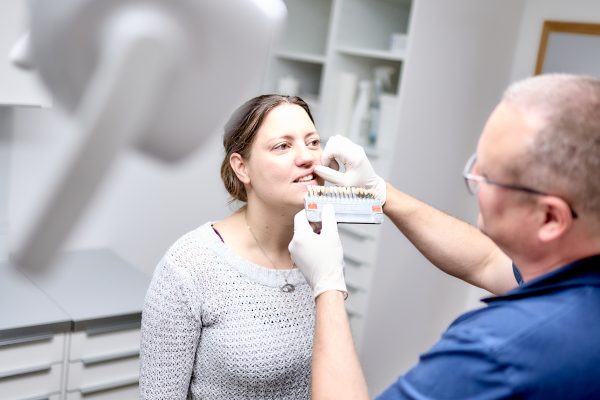In principle, it is necessary to have a professional tooth cleaning prior to teeth whitening.
Only by polishing, smoothing and hardening of the tooth surface is it possible to remove the basis for new discolouration.
Tooth discolouration occurs for a variety of reasons in the course of one’s life, for example as side effects of certain medication. Dyes in food and beverages, such as tea or coffee, adhere to the tooth substance. This often leads to the yellowish-brownish “age discoloration”. The bleaching chemically removes the embedded colour pigments from the tooth using a gentle gel. After the treatment the tooth seems much brighter.
Brightening with individually manufactured tooth splints
A plastic splint which covers the teeth is made specifically for the patient. This is done from an impression of the teeth and subsequently a model is produced by the dental practice. For teeth whitening, this splint is filled with Peroxide-containing bleaching gel. Depending on the concentration, the patient wears these splints between one and eight hours. Five to seven treatments often suffice for so-called “age discolouration”; more stubborn discolouration often requires 15 or more treatments.
Internal bleaching: lightening through deposits in the tooth
If a single, devitalized (dead) tooth is to be lightened, this can also be done with an insert in the tooth. Filling material is removed down to the root filling material and a suitable agent is introduced into the cavity. The tooth is closed temporarily and the brightening agent left in the tooth for one or more days. The procedure can be repeated until the desired result is achieved.

